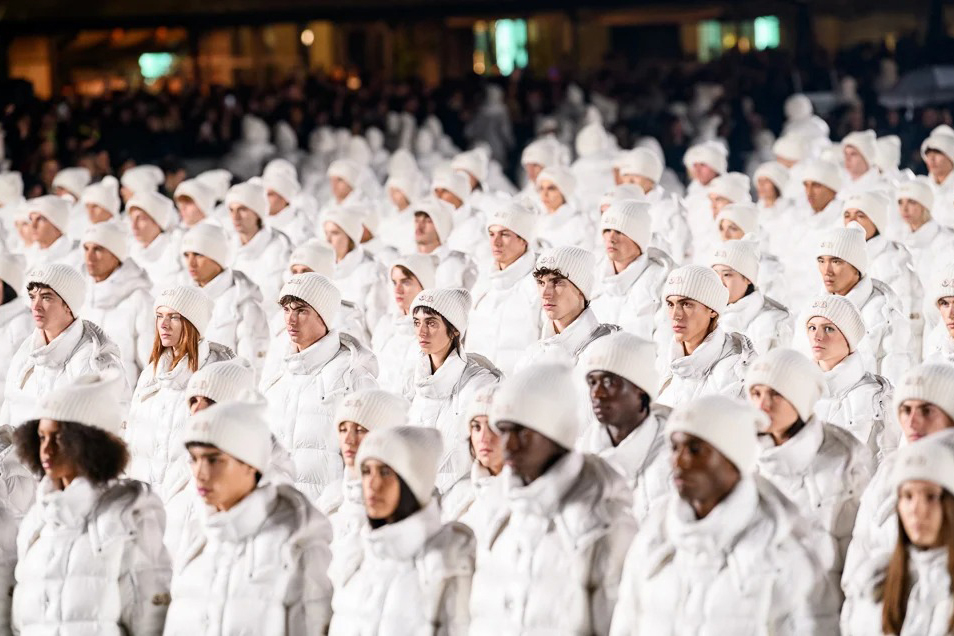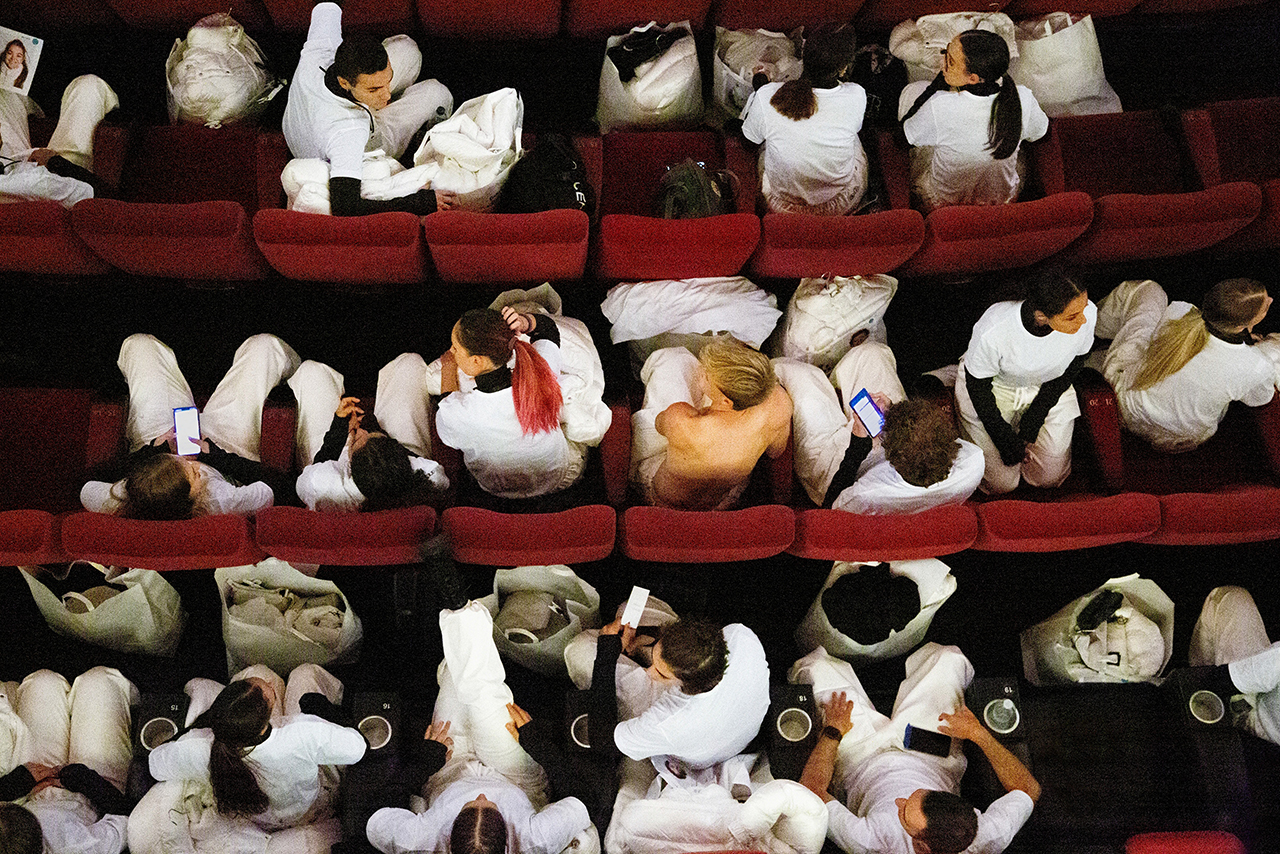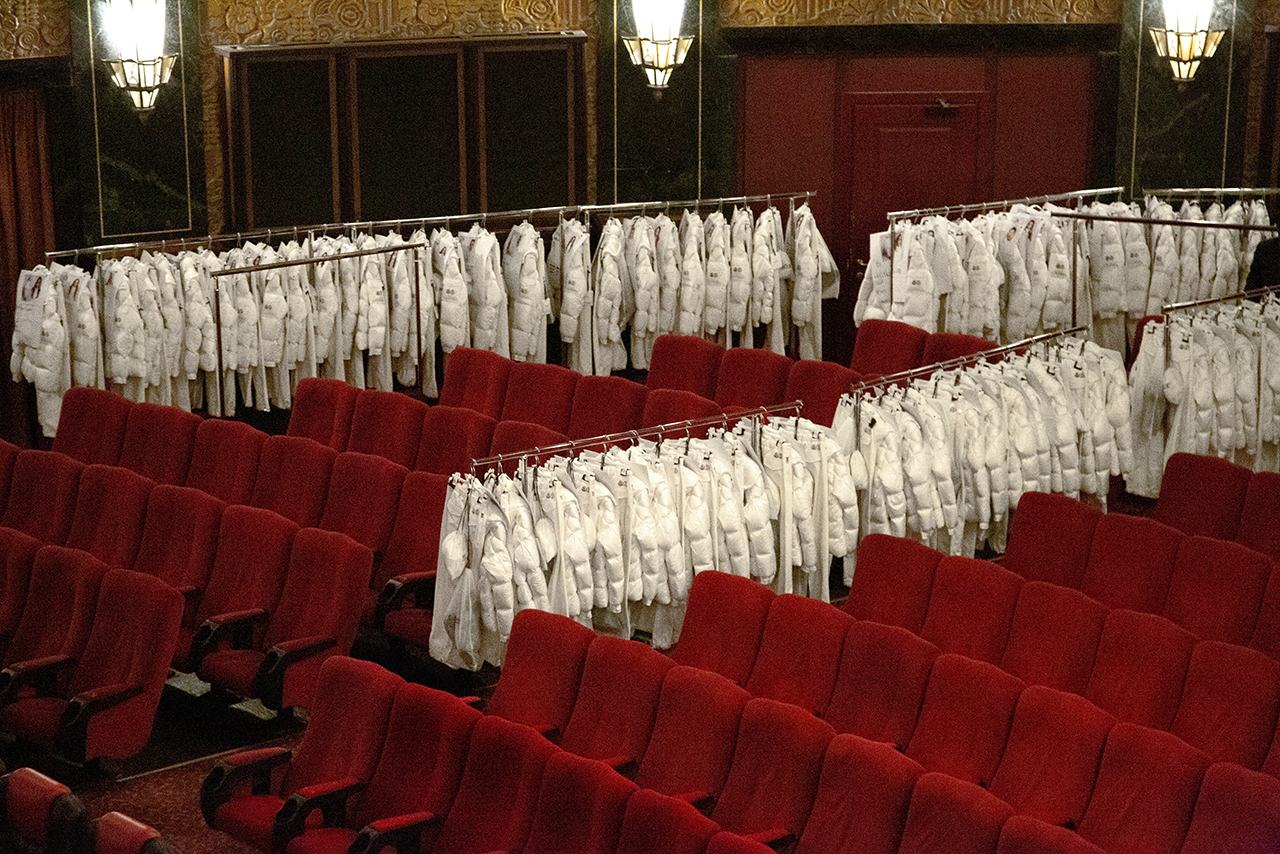From the Alpine slopes of Monestier-de-Clermont to the back streets of London and Fifth Avenue’s glossy windows,
From sponsoring the Grenoble Olympics in the ‘60s to climbing mountains and facing bankruptcy, Moncler has a story like few other brands. However, with items like the Maya jacket – which now gets updated both in-house and through collaborations – and a roster of partners including Junya Watanabe for FW04/05, Nicolas Ghesquière in 2005, sacai in 2007-2008, and later on with Thom Browne, Moncler has established itself as a name in its own fashion world. It doubled down on this status with Moncler Genius, a line that welcomed collaborators like JW Anderson, Simone Rocha, Craig Green and Rick Owens to reinterpret the Moncler world as their own.
Speaking exclusively to Hypebeast, Moncler’s CEO Remo Ruffini said: “We went from a sporting goods company to something very unique. We had down jackets at fashion shows – we [hadn’t ever] changed our products. We were able to be super sophisticated, even with a down jacket. We’ve used cashmere and wool from England with Thom Browne.”
Expanding on Genius, Ruffini added, “Genius is a dream, it’s a building with eight windows. We decided to do Genius to have one idea, one project, one vision for a younger generation.”
Now, Moncler celebrates its 70th anniversary. “I always say that we need to be a start-up,” explained Ruffini. “The world changes very fast and we need new products and changes. We have to understand that we are quite old, but at the same time we have good energy and focus to make it another 70 years.”
To understand the heritage that underpins Moncler’s identity, Hypebeast caught up with Mr. Ruffini to find out what it all means for a brand that aims to live for another seven decades.
Hypebeast: What excites you about Moncler’s 70th anniversary?
Remo Ruffini: Many things. We’re thinking about our celebration over next 70 days; the first day has launched with a campaign with a collection of the best images from the last 70 years. It’s based on the idea of “Extraordinary Forever.” We’re talking about [the ‘50s], this decade was extraordinary and there were many extraordinary people. We want to keep this approach for our future – we don’t want to be pretentious, but at the same time, Moncler is extraordinary in this world. We have the event in Piazza del Duomo, Milano, and that is a milestone for Milan as we [takeover] the most important square.
Can you tell us more about the event?
I said: “We need to celebrate.” I need to explain the vision of the brand, the story.
Everything is very symmetrical, clean. 1,952 people all in white in one big group. We’re trying to reach millions, even billions of people. It’s a public space for everyone in the city, it’s not a fashion event – it’s a city event.
Everything in the event is based on the number seven. We have different projects – seven designers that we’ve used in the last 70 years – centered on the Maya Jacket. We’ve redesigned the Maya with new fittings, materials and technology, and we’re going to launch this iconic jacket at the event.
And what of the designers who are re-working the jacket?
Another project in the 70 days is to choose seven designers we love and have worked with over the last 70 years – we have Francesco Ragazzi [of Palm Angels], he’s like my third son. Then we have Thom Browne, the first designer to give us our fashion show, and another opportunity to interpret the couture world with Pier Paolo Piccioli, the Creative Director of Valentino. Pharrell Williams will also be a part of this group, and so will Rick Owens. Hiroshi Fujiwara as well, he’s one of the most interesting and inspiring people when it comes to culture.
These designers are a part of Moncler, and they will explain our creativity to the market. They have all re-interpreted the Maya Jacket in their own way.
You’re going back to some of the brand’s roots. How has Moncler stayed true to its roots over the seven decades?
We’ve respected the DNA. Since day one, I’ve said that we can do everything but we have to respect the DNA. It’s important to understand where we’ve come from. If you go through every decade, every picture in the “Extraordinary Forever” campaign, people my age or even younger remember Moncler. Most customers today don’t know about Moncler in 1952 or the ‘60s or the ‘80s. Respecting the DNA is a must for me.
Having said that, we’ve done a lot in terms of products and materials, we’ve done a lot to stay true to our roots but also to be modern, technical, light, [practical] for the cities and travel. Moncler is something that you can use every day.
What has changed since you took charge of Moncler in 2003?
We’ve come from the mountains and landed in the city.
I’m always thinking about how I can reach the next step. I remember saying that I had to make a down jacket for summer. We had to make it weigh just 100 grams and we reached that goal. When I went to the office and told them, they said “what do you mean!?”
Another thing was making a campaign every season. I didn’t want to do something fashion, I wanted to do something to build a brand, so I’d never used a big model or celebrity. Our campaigns had dogs with down jackets, or we’d think about the moon.
I’ve always had this in mind: Moncler, survive fashion. Moncler must be in this world, but it’s not easy to survive fashion. We don’t want to be too into the fashion world because the jacket will only last one year; I see jackets on the street that I made 10 years ago, this is surviving fashion.
I’ve never followed any successful fashion brands, Moncler is totally unique. When I bought Stone Island a couple of years ago, being beyond fashion and luxury is another strong statement and that’s always been in mind.
With this in mind, where does Moncler sit in the fashion scape?
[Moncler] Genius was something totally different. It was a strong approach [to fashion]. But after COVID, I’ve had to re-balance the company strategy on the pillars: we have to think about revenue, Genius, Grenoble (our ski collection), and our future. We’re able to talk to different communities and different ages, and that’s the most important part for me. We had to be very clear with this for our future. Communicating Genius was easy, it was a different designer every month. But now it’s about our pillars. We are one of the best in terms of technology in the market, and it’s important for us to explain this to our audience.
How does Moncler aim to succeed for another seven decades?
This is a question I make to myself every day. The world has changed a lot in the last few years, and that’s helped us to restructure ourselves. The customer, the community, 10 years ago thought progression was really important. But now, people moved from the city to go hiking – when will we have the possibility to give this experience to our community in the store, a physical experience? Can we give them this physical experience in the digital world? This could be another turning point.
Another point is changing luxury from something you buy into luxury as something you live. I don’t want to be 100% into the luxury world. To live in this world is totally different and is the future. This is something interesting to brainstorm, it’s not happened yet. Communication and interaction, an exchange, is important. It’s there for the future. Before it was just a top-down approach, something very obvious and every company did the same – today, it’s about exchange and interactions with the community, and that’s a challenging point but it’s all for the future.
We have to put exclusivity on the table. We need to be a part of and belong to a community. A brand must be – I don’t want to say recognizable – but it must be part of a community and a part of their [the customer’s] DNA. Belonging is another story. That’s the way to build a vision for the next 70 years.









